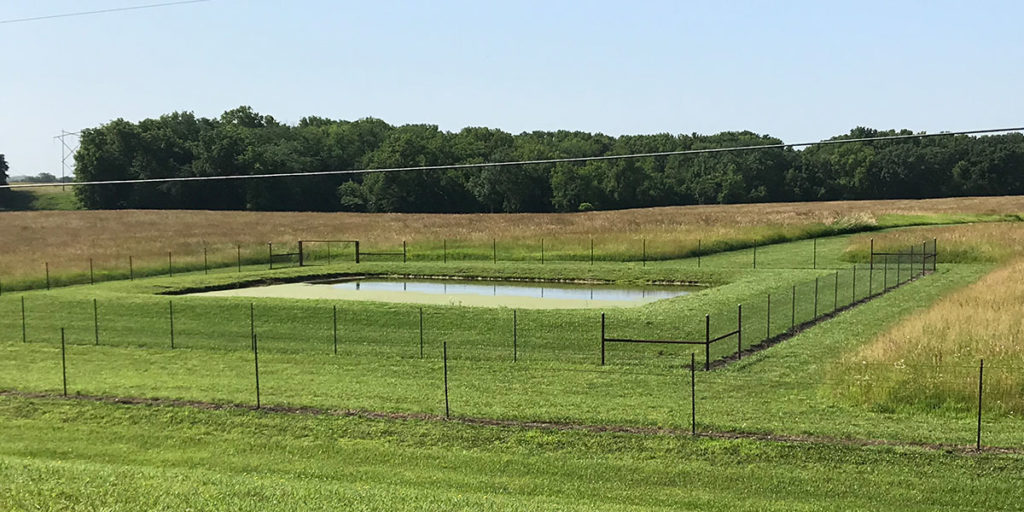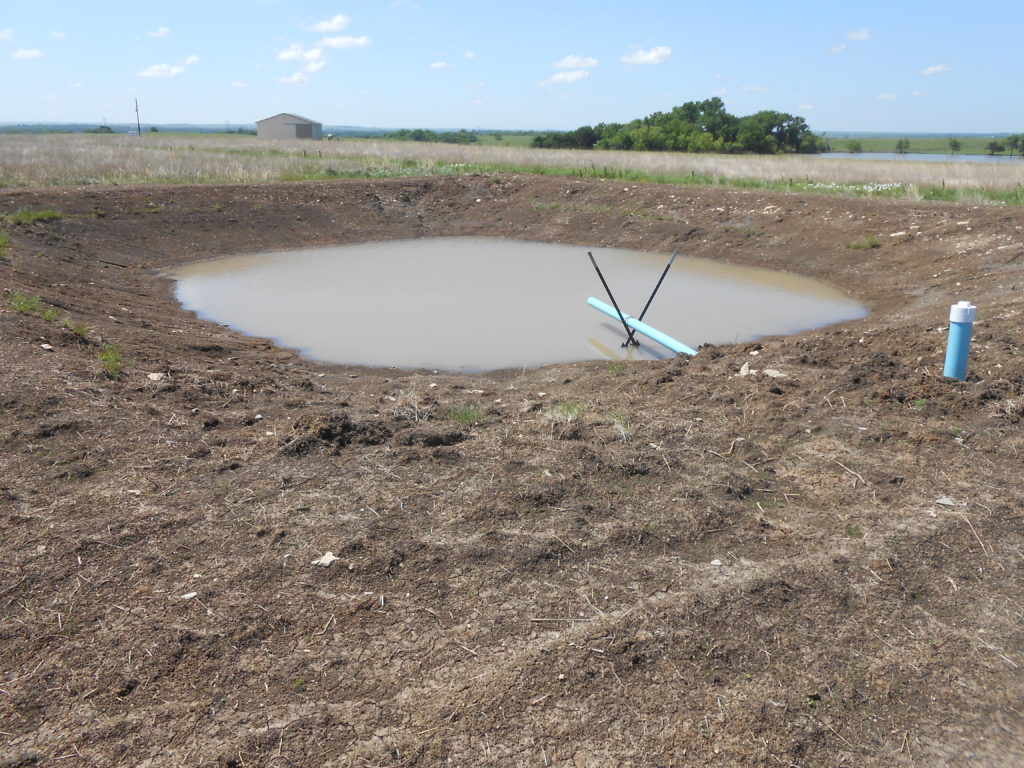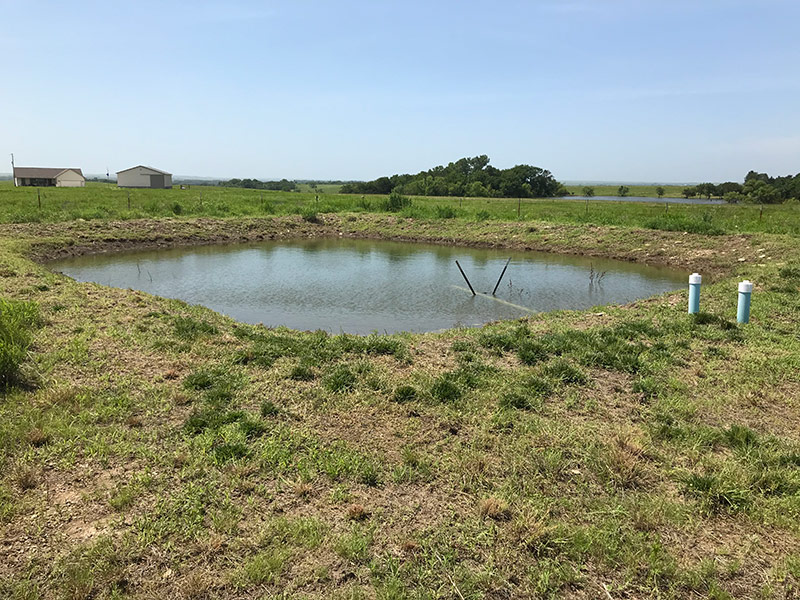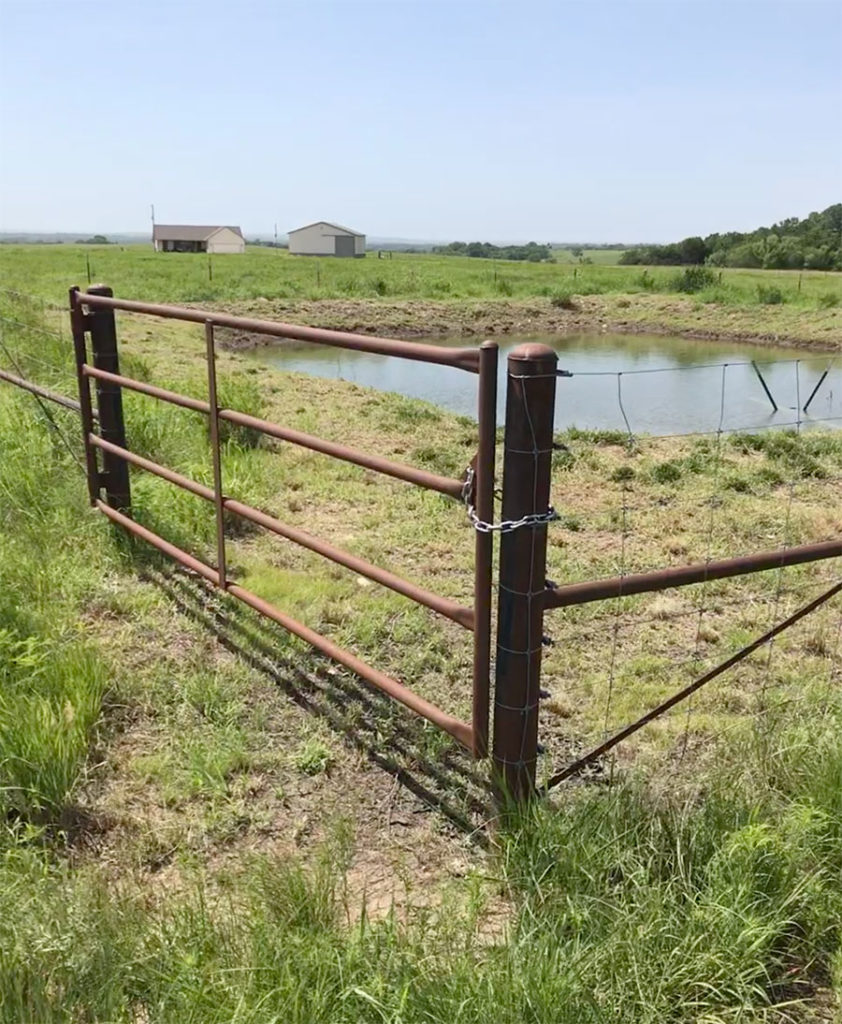Definition of a Wastewater Pond
A Wastewater Pond is a small square body of water. It receives home sewage, where evaporation, aerobic and anaerobic decomposition occurs. It is typically three (3) to five (5) foot liquid depth and is protected by wire fencing.
It can be oval, round or square. If square, the corners should be rounded. A minimum of three (3) acres of site are needed for a functional Wastewater Pond.
They are recommended for if clay type soils exist, and if the site has poor drainage, and there is plenty of land.

Construction Costs
Wastewater Stabilization Ponds are the least expensive method for on-site treatment. Costs to construct a lagoon are dependent on several factors, including those listed below:
- Soil Percolation Rate.
- Topography
- Location of Bedrock to Soil Surface.
A sewage lagoon for a small residence can cost around $3000.00. For a large residence, the costs for sewage lagoon is about $4000.00. I In addition, there is minimal maintenance associated with a Wastewater Pond.

How a Wastewater Pond Works
A Wastewater Pond is a nutrient enriched complex ecosystem. Bacteria and other microorganisms consume oxygen as they feed on sewage components and give off carbon dioxide, which in turn is consumed by algae. A functioning Wastewater Pond is green in appearance. Microscopic plants (algae) produce a significant portion of the oxygen needed. Additional oxygen is provided by wind.
Breakdown of Wastes
Wastes are broken down by microorganisms into water, gasses, and residual solids, which settle and accumulate in the Pond. If a Wastewater Pond is properly sized, properly constructed, well operated, and routinely maintained, no offensive odors will radiate from the Pond.
Vegetation
Trees should be at least 30 feet and shrubs 15 feet outside the embankment. Sunlight is essential for the algae to produce oxygen. East, south and west sides of the Pond should not be shaded.
Location
A Wastewater Pond should be located down slope and away from the house. A minimum distance from the Wastewater Pond to the house is one hundred feet (100’-0”). The Wastewater Pond should be located a minimum one hundred feet (100’-0”) from the nearest Property Line.
The Wastewater Pond should be located at least fifty feet (50’-0”) from any other water surface, and thirty feet (30’-0”) from any potable water lines.
A Wastewater Pond should be located outside of the 100 year floodplain. The bottom of a Pond should be at least 4 feet above highest groundwater level.
If the pond needs to be located upgrade from the house, a pump chamber and pump are required. If a pump is required, a septic tank should be employed. This pump system should be professionally designed and installed.
Appearance
Methods to make a Wastewater Pond more aesthetically pleasing are as follows:
- Blend the pond in with the topography. Do not place the pond in the center of a large open area.
- Dig the pond into the ground. Do not build it up off the plane of the landscape.
- Utilize trees, shrubs, tall grasses and landscape berms.
- Design the pond to appear more natural. Round, oval, or any other shape than square will allow a Pond to fit more naturally into the landscape.
- Make fencing out of wood or other natural materials. Colored fencing, such as black, can be utilized.
- Located fencing outside of berm, and not on top.
SIze
The water surface area needs to be large enough to provide adequate oxygen to keep the pond aerobic. A rule-of-thumb is 165 square feet per person. A minimum size of 900 square feet, is recommended for adequate oxygen transfer.
The pond needs to be designed to hold all wastewater. Discharge into private ponds is not allowed. Loss of wastewater through seepage and/or evaporation is valued at a total of 10 – 14 feet.
A 5-foot water depth and two feet (2’-0”) freeboard is ideal. This allows for ease of maintenance of vegetation between the water level and top of embankment. Minimum depth to avoid rooting of aquatic vegetation is three feet (3’-0”).

The Sewer Line from House to the Pond
A four inch (4”) diameter line from the house to the pond is required. All joints should be water tight to avoid tree root clogs. Schedule 40 thermoplastic sewer pipe with solvent welded joints is recommended.
The sewage line connecting the house to the Pond, shall have a down slope allowing flow by gravity. If possible, the Pond should be located northeast of the house. A southwest location is the least preferred.
Two (2) cleanouts should be provided. One (1) cleanout shall, be located just outside the house, and one (1) cleanout be located near the pond where the ground surface is 6” above the embankment. Additional cleanouts should be located at any bends in the pipe.
Leaky Ponds
Should a pond exceed the leakage of ¼” per day, materials can be used to seal the bottom and sides of the pond. The recommended solutions are as follows:
- Bentonite clay,
- Treatment additives for native clay
- Membrane Lining
Fencing Around a Wastewater Pond

Fencing is required around a Wastewater Pond.
Accidental drowning is the second leading cause of death for children. In addition, Wastewater Ponds contain sewage and can easily spread disease to children, pets, and other animals.
Fencing should consist of the following characteristics:
- Locate at least three feet (3’-0”) outside the embankment.
- A large, minimum four feet (4’-0”) wide, rigid frame hinged gate should be provided for access.
- The fence should be at least four feet (4’-0”) in height.
- Fenced openings should be no larger than eight (8) square inches, and vertical slots no more than 1-1/2” wide. Wire mesh is recommended.
- Wood fences should not extend more than two feet (2’-0”) above the top of the embankment.
- One (1) strand of barbed wire shall be located on top of fence, except when livestock is present, where two strands should be provided.
Construction of a Wastewater Pond
For constructing a Wastewater Pond, a small bulldozer or front loader is recommended. The following are standards for the pond:
- Side slopes: 3:1 slope or less.
- Freeboard: Minimum two feet (2’-0”) above the normal depth. minimum berm top width of five feet (5’-0”).
- Berm Finish: Uniform surface above the water line.
- Strip permeable soil from the surface and base of embankment before excavating the bottom and the formation of the embankments.
- Rock should be over excavated by at least one foot (1’-0”) to remove rock. After rock removal, fill and compact at least one foot (1’-0”) of clay material.
Maintenance of a Wastewater Pond
A Wastewater Pond must be properly maintained. If not maintained, problems such as groundwater and surface water contamination may occur. In order to properly maintain a Wastewater Pond, the Owner needs to acknowledge the following factors:
- Control the water used. Spread out the water usage for even flow over a time period.
- Avoiding the use and disposal of certain materials and products.
- Generate alternative disposal methods for materials that are typically disposed of in a public system.
- For removal of sludge, generate a time schedule for checking and cleaning of the Pond.
For More Information
State of Kanas Department of Health and Environment Manual – Minimum Standards for design and Construction of Onsite Wastewater Systems.
University of Nebraska Extension, NebGuide – G1441 – Residential Onsite Wastewater Treatment: Lagoon Design and Construction